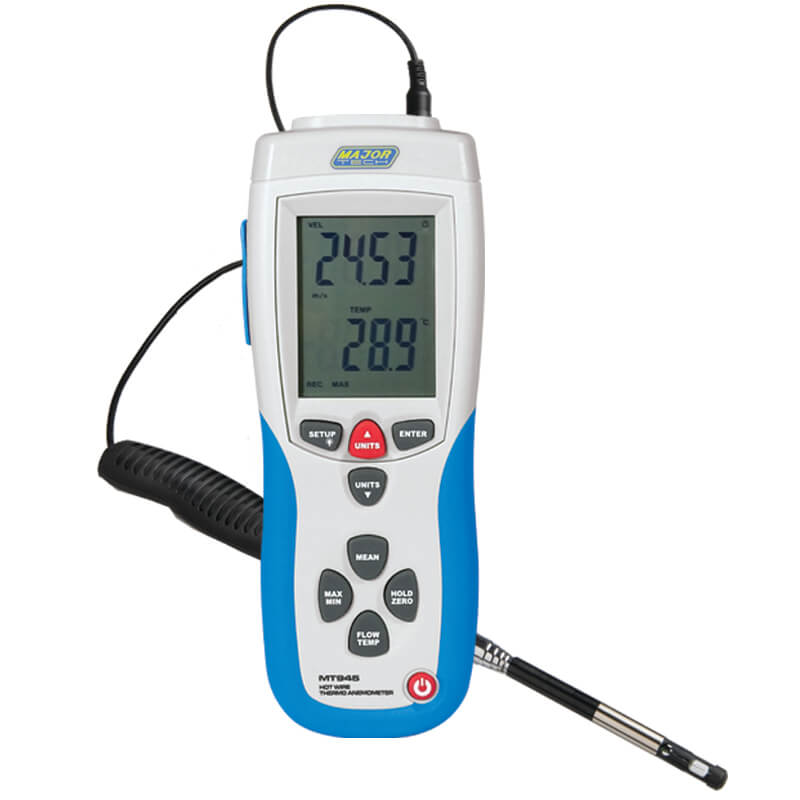Comparing Digital and Mechanical Anemometers: Which is Right for You?
Comparing Digital and Mechanical Anemometers: Which is Right for You?
Blog Article
Anemometers Revealed: Comprehending Their Relevance in Ecological Tracking and Precaution
The duty of anemometers in ecological tracking and precaution is often ignored, yet their importance is undeniable. These instruments have a lengthy background rooted in clinical inquiry and technological advancements, evolving to come to be crucial devices in different fields. From weather forecasting to aeronautics safety and security, anemometers play a vital duty in supplying precise data that educates decision-making procedures and enhances total security. Comprehending the intricacies of anemometers introduces a globe of essential understandings that are essential to our understanding of the environment and the actions we take to ensure safety and security.
History of Anemometers
The advancement of anemometers can be traced back to the old people where rudimentary wind gauging devices were very first made use of. These early wind measurement devices laid the foundation for the development of much more innovative anemometers in time. One of the earliest recognized anemometers was the hemispherical mug anemometer invented by Leon Battista Alberti in the 15th century. This style included 4 hemispherical mugs that collected wind energy, supplying a dimension of its strength based on the speed of turning.
In the 18th century, the prominent researcher John Thomas Romney Robinson introduced the Robinson anemometer, which featured four hemispherical cups mounted on horizontal arms that extended from a central axis. This style ended up being a criterion in atmospheric measurements due to its accuracy and reliability. For many years, innovations in technology led to the development of more modern anemometers, including ultrasonic anemometers and laser Doppler anemometers, providing enhanced precision and effectiveness in gauging wind rate and instructions. The background of anemometers showcases an exceptional journey of technology and progression in the area of meteorology.
Sorts Of Anemometers
Throughout the field of weather forecasting, various kinds of anemometers have actually been created to properly determine wind rate and direction. Sonic anemometers use ultrasonic signals to measure wind rate and direction accurately. Hot-wire anemometers operate based on the principle that the cooling impact of wind on a heated cable is proportional to the wind speed.
Applications in Weather Forecasting
Having actually talked about the numerous sorts of anemometers made use of in weather forecasting for determining wind rate and instructions, it is necessary to discover their useful applications in the field. Anemometers play a crucial duty in weather forecasting by giving real-time and accurate information on wind problems (anemometer). Meteorologists use anemometers to keep an eye on wind rate and direction to anticipate weather condition patterns, issue warnings for severe climate events like cyclones, tornados, and hurricanes, and examine climatic problems for air travel safety and security
In weather forecasting, anemometers assist in comprehending regional and local wind patterns, which are essential for forecasting weather adjustments and identifying weather patterns. These tools are likewise made use of in research study to examine microclimates, metropolitan warmth islands, and air contamination diffusion. Furthermore, anemometers are used in farming to maximize plant administration practices, such as irrigation and chemical application, based on wind problems.
Importance in Aviation Security
An integral facet of guaranteeing aviation safety exists in the meticulous tracking of wind problems making use of anemometers. Anemometers play a vital role in aviation by giving real-time information on wind speed and instructions, assisting pilots in making notified choices throughout landing, liftoff, and trip. Uncertain and solid winds can significantly influence aircraft operations, making it important for aeronautics authorities to count on exact wind dimensions to ensure the safety and security of guests and crew.

In the vibrant environment of aviation, where also minor adjustments in wind rate and direction can have profound results, anemometers stand as crucial tools for advertising secure and protected flight.
Role in Environmental Research Study
Exactly how do find out here anemometers add to improvements in environmental study? Anemometers play an important duty in environmental research by supplying essential information on wind speed and direction. This details is important for recognizing numerous atmospheric procedures, such as air pollution dispersion, weather patterns, and climate modification. By properly measuring wind qualities, anemometers help scientists analyze the motion of toxins in the air, you can try this out examine the influence of industrial exhausts, and predict the spread of contaminants in the setting.


Conclusion
In verdict, anemometers have played a critical role in ecological tracking and safety procedures. Recognizing the relevance of anemometers is essential for precisely gauging wind rate and instructions, which is crucial for anticipating weather patterns, guaranteeing secure air travel operations, and conducting ecological studies.
One of the earliest recognized anemometers was the hemispherical cup anemometer designed by Leon Battista Alberti in the 15th century. Over the years, developments in modern technology led to the development of more modern-day anemometers, consisting of ultrasonic anemometers and laser Doppler anemometers, providing enhanced precision and efficiency in measuring wind rate and direction. Hot-wire anemometers run based on the concept that the cooling effect continue reading this of wind on a heated cable is proportional to the wind rate. Meteorologists make use of anemometers to check wind speed and instructions to anticipate weather patterns, issue warnings for serious weather occasions like tornados, cyclones, and tornadoes, and analyze atmospheric conditions for aviation security.
Recognizing the significance of anemometers is crucial for precisely gauging wind rate and instructions, which is vital for predicting weather condition patterns, making sure risk-free aeronautics procedures, and performing ecological researches. (anemometer)
Report this page